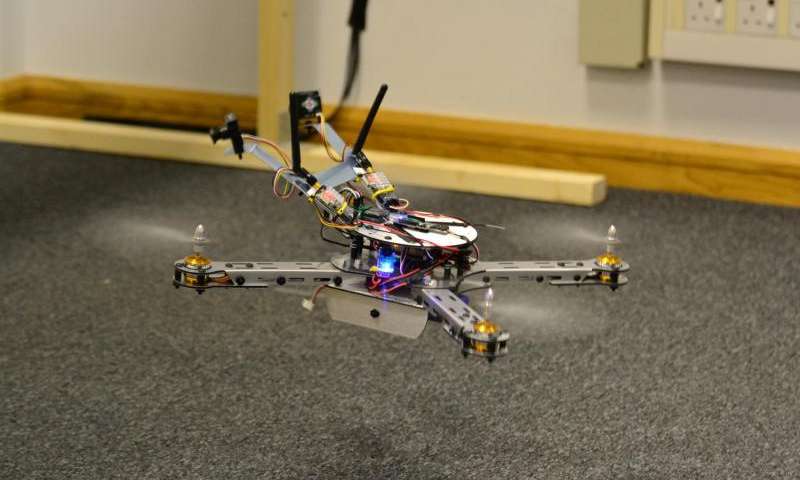
In an act that can only be classified as the early stages of digitized immortality, that is, uploading a consciousness onto a computer, researchers from the Universities of Sheffield and Sussex have digitally reconstructed the neurons in the brain of the European honeybee, Apis mellifera, and uploaded the virtual brain simulation to a drone.
The experiment — known as the Green Brain Project — aims to create artificial brains modeled after living creatures and upload them into robots. So far, researchers have successfully mapped the neural pathways responsible for the bee’s olfactory and vision systems and installed them in a quadcopter to see what’ll happen.
Of course, their partially completed brain model cannot operate the rotors just yet, but it did manage to fly down a corridor without colliding into anything, and in another test, it used a checkboard pattern on the wall as a reference point for navigation. Regardless, as you’ll see in the video below from a test last November, the feat is equally impressive.
Despite its small scale and limited neuron count (somewhere along the magnitude of 10^6 neurons), the bee’s brain is considered a marvel of evolution, exhibiting advanced cognitive behavior in its ability to sense the environment, fly and navigate, pollinate, and decide when to sacrifice its life to ward off predators.
The team’s eventual goal is to create a digital rendition of the bee brain with behavior that’s virtually indecipherable from a biological bee, allowing the robots to exhibit a true form of rudimentary AI and act autonomously. With the population of honey bees declining worldwide, there may be an eventually need for an artificial agent to carry out the pollination that’s so vital for plant growth.
Source: IFL via Phys.org
Advertisement
Learn more about Electronic Products Magazine





